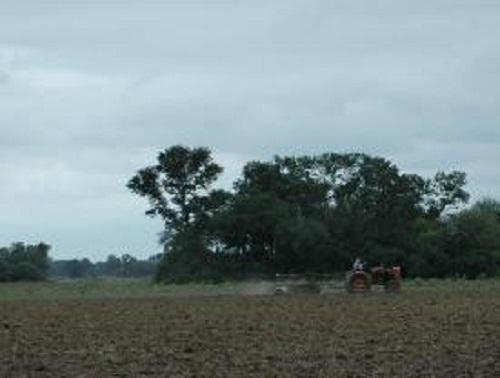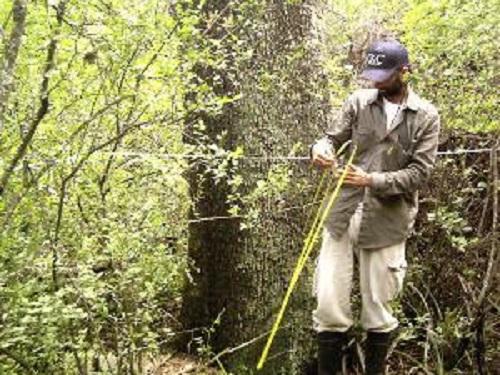Sebastián Andrés Torrella
Evaluate the effects of forest loss over the plant community and contribute to the development of conservation strategies for the “forest of three quebrahos”, an ecosystem of Argentinean Chaco threatened by agriculture expansion.

Three Quebrachos forest fragments in agriculture matrix.
The “forest of three quebrachos” is one of the ecosystems of Argentinean Chaco Region most affected by deforestation for agriculture and it is not represented in any protected area.

Fieldwork. Sebastian Torrella measuring the DBH of a Quebracho (Schinopsis balansae).
In the study area, SW Chaco Province, at least 50% of the “forest of three quebrachos” area in 1957 has been lost. The remnant area is distributed in a greater number of patches, which became smaller, and more isolated from each other. Actual policies of deforestation are focused at farm-scale and promote protection of remnant forests as windbreaks with thin narrow shape. These policies does not consider minimal size, shape and connectivity in a landscape-scale analysis, which are of major importance for forest conservation.
Despite the important role of fragmentation in biodiversity conservation in the region, the response of the plant community to this process has not been evaluated yet. Understanding this relationship is essential, since vegetation provides habitat for many animal groups. Impacts on the structure and composition of vegetation will produce an impact on the conservation of an important group of species Using satellite images we will select the study sites. We will select windbreaks and other forest patches with different size and isolation degree. We will measure species` composition and structure of woody vegetation in forest patches, calculate species composition, richness, diversity, basal area and density. We will compare these parameters between patches with different area and isolation degree, and between windbreaks and other patches.
In a landscape-scale analysis, we will evaluate the importance of patches with different size and isolation degree for the conservation of plant assemblage in the “forest of three quebrachos”. We will evaluate the utility of windbreaks as a forest conservation strategy, studying their persistence and importance in landscape connectivity. Using results obtained we will propose conservation strategies and management policies, and provide information to local population, producers, forestry technicians and decision makers through printed materials and workshops.